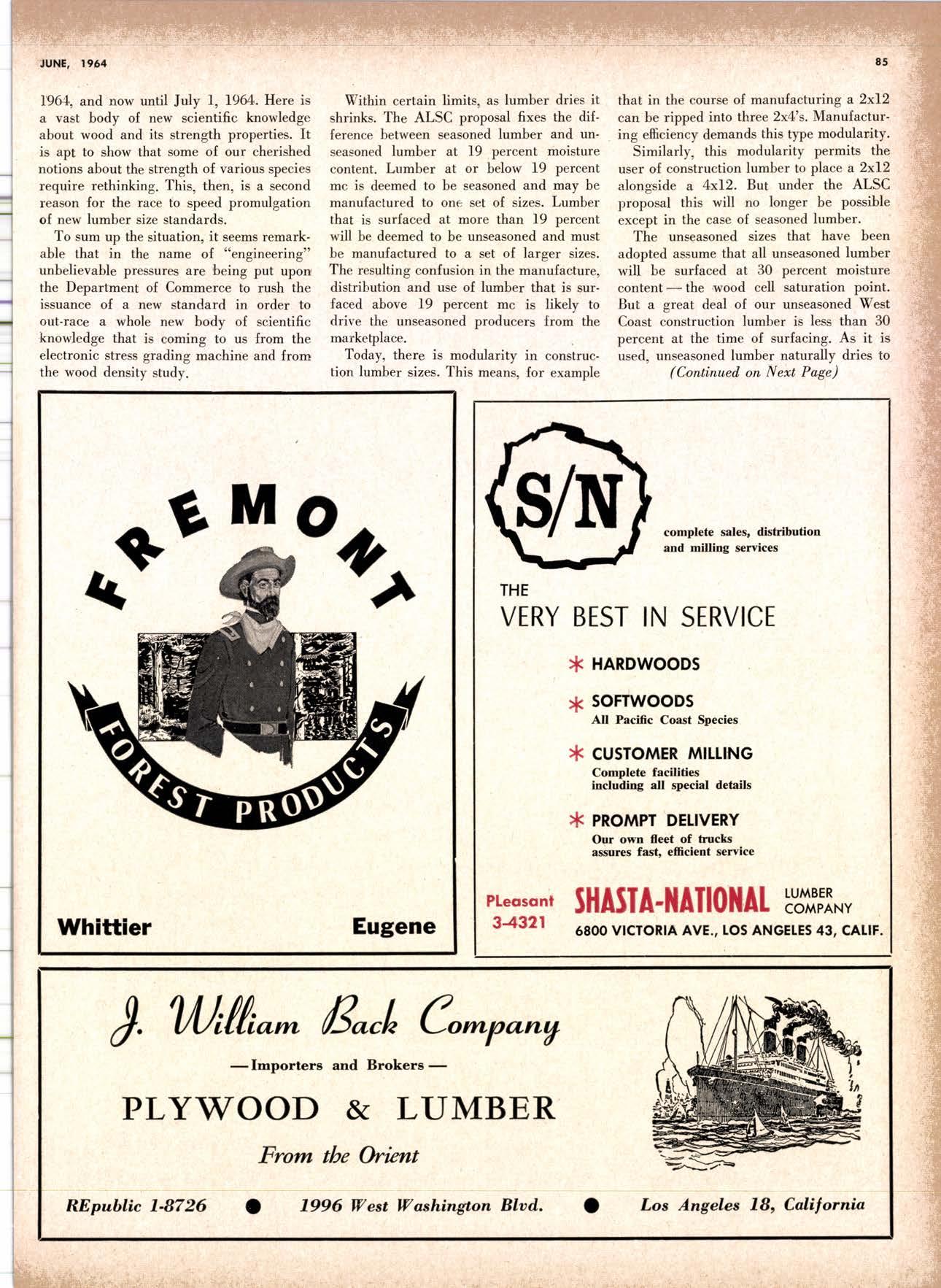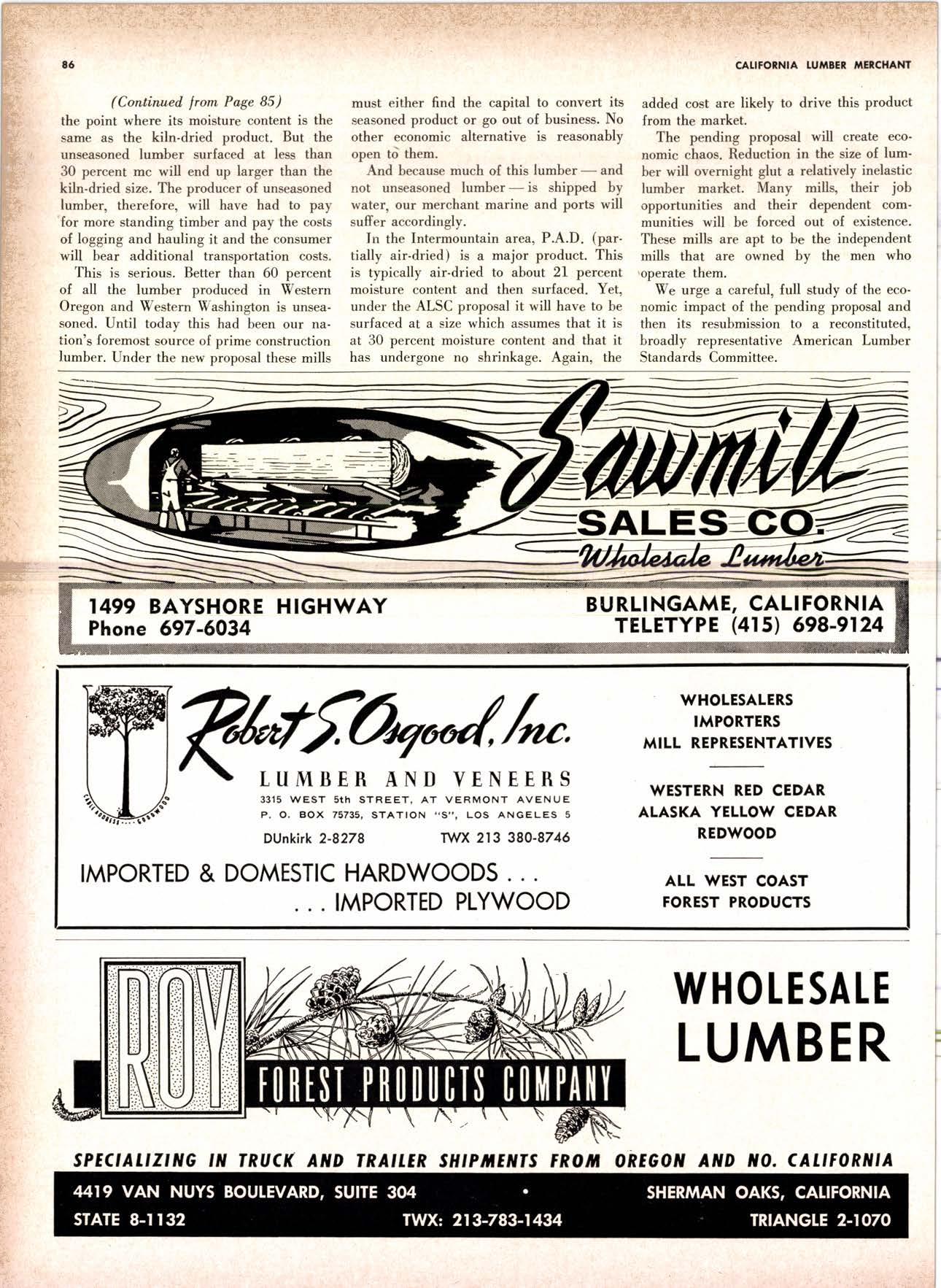
2 minute read
ASSOCIAIED REDWOOD TilttS
Also Direct Rqil ond T&T Shipmenrs
Kerrnington
196.{, and now until July I, 1964. Here is a vast body of new scientific knowledge about wood and its strength properties. It is apt to show that some of our cherished notions about the strength of various species require rethinking. This, then, is a second reason for the race to speed promulgation of new lumber size standards.
To sum up the situation, it seems remarkable that in the name of 'oengineering" unbelievable pressures are being put upon the Department of Commerce to rush the issuance of a new standard in order to out-race a whole new body of scientific &nowledge that is coming to us from the electronic stress grading machine and from the wood densitv study.
Within certain limitso as lumber dries it shrinks. The ALSC proposal fixes the difference between seasoned lumber and unseasonetl lumber at 19 percent moisture content. Lumber at or below 19 percent mc is deemed to be seasoned and may be manufactured to one set of sizes, Lumber that is surfaced at more than 19 percent will be deemed to be unseasoned and must be manufactured to a set of larger sizes. The resulting confusion in the manufacture, distribution and use of lumber that is surfaced above 19 percent mc is likely to drive the unseasoned producers from the marketplace.
Today, there is modularity in construction lumber sizes. This means, for example that in the course of manufacturing a 2x12 can be ripped into three 2x4's. Nlanufacturing efficiency demands this type modularity.
Similarly, this modularity permits the user of construction lumber to place a 2xL2 alongside a 4x12. But under the ALSC proposal this will no longer be possible except in the case of seasoned lumber.
The unseasoned sizes that have been adopted assume that all unseasoned lumber will be surfaced at 30 percent moisture contentthe ,lvood cell saturation point. But a great deal of our unseasoned West Coast construction lumber is less than 30 percent at the time of surfacing. As it is used, unseasoned lumber naturally dries to (Continueil on Next Page) complete sales, dictlbudon and milling servlces
(Continued, lrom Page 85) the point where its moisture content is the same as the kiln-dried product. But the unseasoned lumber surfaced at less than 30 percent mc will end up larger than the kiln-dried size. The producer of unseasoned lumber, therefore, will have had to pay for more standing timber and pay the costs of logging and hauling it and the consumer will bear additional transportation costs.

'Ihis is serious. Better than 60 percent of all the lumber produced in Western Oregon and Western Washington is unseasoned. Until today this had been our nation's foremost source of prime constmction lumber. Under the new proposal these mills must either find the capital to convert its seasoned product or go out of business. No other economic alternative is reasonably open t<i them.
And because much of this lumberand not unseasoned lumberis shipped by water, our merchant marine and ports will suffer accordirrgly.
In the Intermountain area, P.A.D. (partially air-dried) is a major product. This is typically air-dried to about 2I percent moisture content and then surfaced. Yet. under the ALSC proposal it will have to be surfaced at a size which assumes that it is at 30 percent moisture content and that it has undergone no shrinkage. Again, the added cost are likely to drive this product from the market.
The pending proposal will create eco' nomic chaos. Reduction in the size of lum' ber will overnight glut a relatively inelastic lumber market. Many mills, their j"b opportunities and their dependent communities will be forced out of existence. These mills are apt to be the independent rnills that are owned by the men who operate them.
We urge a careful, full study of the economic impact of the pending proposal and then its resubmission to a reconstituted. broadly representative American Lumber Standards Committee.










